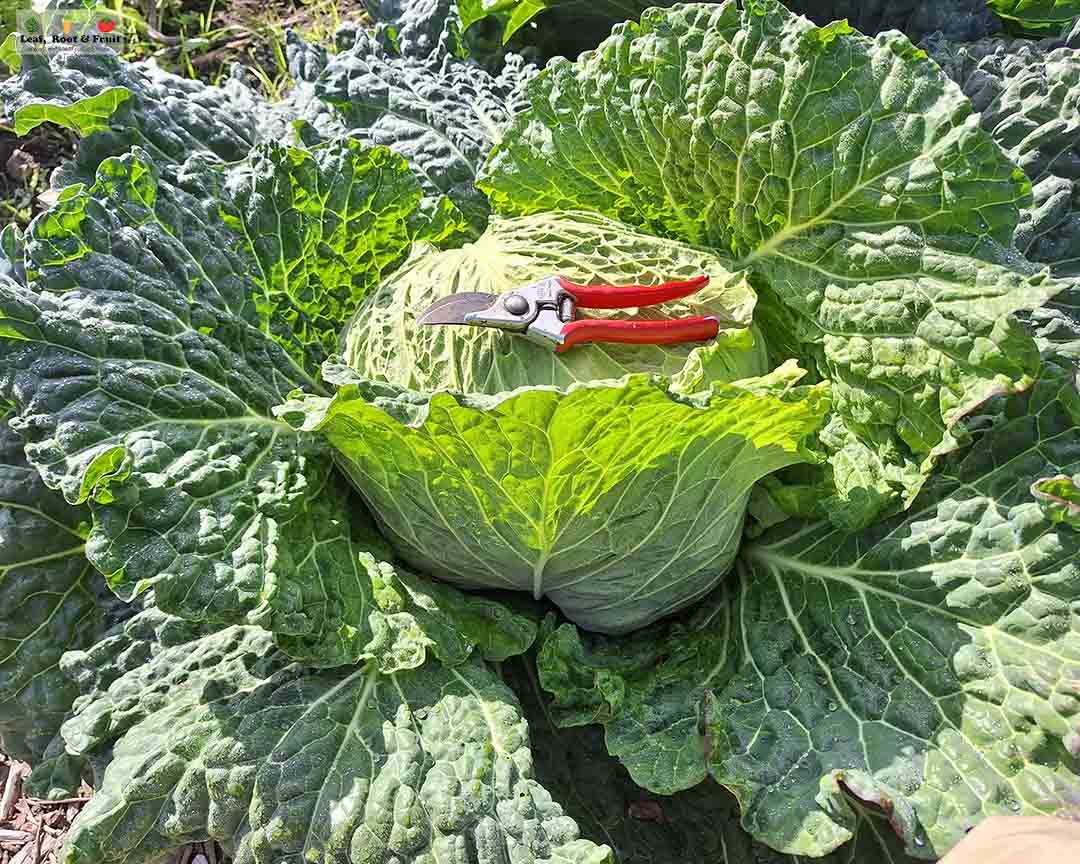Growing cabbages used to baffle me. In my five years of gardening here in cool temperate Kyneton, I’d never been able to reliably grow a decent crop of cabbages. They tended to bolt early, split or just amount to nothing. I’d pick the occasional winner, but that was a rarity. I was so frustrated that I couldn’t troubleshoot the problem. So I put out a call for help on social media: What am I doing wrong?
That post highlighted how the knowledge and experience that I share with you is not a one-way street. A spark of insight from one comment led to a tweak in the way I grow cabbages, and bam, just like that, the problem is solved. Now I’m growing some amazing looking cabbages. Here’s how you can grow fantastic cabbages too.
Stop slugs, space seedlings and savour sumptuous sauerkraut

Keep the weeds down as young seedlings can quickly become smothered. The weeds also provide habitat for slugs.
Give your cabbages plenty of space and lots of nutrients. Cabbages are not a crop for the small-space gardener. Fortunately, cabbages grow in autumn and winter, so their high water requirements are normally taken care of by rainfall.
Common problems when growing cabbages
There are quite a few things that can go wrong when growing cabbages. Most of them are easily overcome with good planning.
Cabbages that are planted too late in the season may bolt before they form a decent head (because of photoperiodism). This is usually evident by the head splitting apart and sending up a flower stalk.
Another reason for early bolting of cabbages is poor spacing (more on this later). Cabbages need lots of room to grow.
One of the most annoying aspects of growing cabbages is slugs. They’ll destroy young seedlings. What’s worse is when they find their way into the cabbage head itself, making preparation a slimy and arduous task of finding and removing the slugs.
Cabbage White Butterfly can wreak havoc on young cabbage seedlings and other brassicas. Read more on how to avoid this problem here.
A range of fungal diseases affect brasscias. I find these are best overcome with good airflow and careful variety selection.
One of the most critical aspects of growing cabbages is ensuring your seedlings don’t become stressed. Choosing stressed seedlings will cause the plants to bolt early. More on that here.
The following posts in the Vegetable Patch from Scratch series will give you more information on:
Myth-busting: cross-cut cabbages
The most common cabbage myth is spread by parents unwilling to discuss human reproduction with their children.
Another common cabbage myth is that they (and Brussels sprouts) need to have a cross cut into the base of the stalk before cooking. Some folks claim this is because it helps them to cook better. However, this practice probably stems from the superstitious belief that evil spirits or tiny demons hid between the leaves of cabbages, sprouts and lettuces. In medieval times, a cross needed to be cut into the base of the plant to drive the evil spirits out and prevent them from entering your body and causing a stomach ache.
The nitty-gritty of growing cabbages: phenology, varieties and planting
Timing
This chart shows the best times to grow cabbages based on my experience of growing these crops in both Melbourne (warm temperate) and Kyneton (cool temperate), both in south-eastern Australia. The timing is applicable for growers in the same climates across the southern hemisphere. Northern hemisphere folks will need to adjust the timing by six months.



